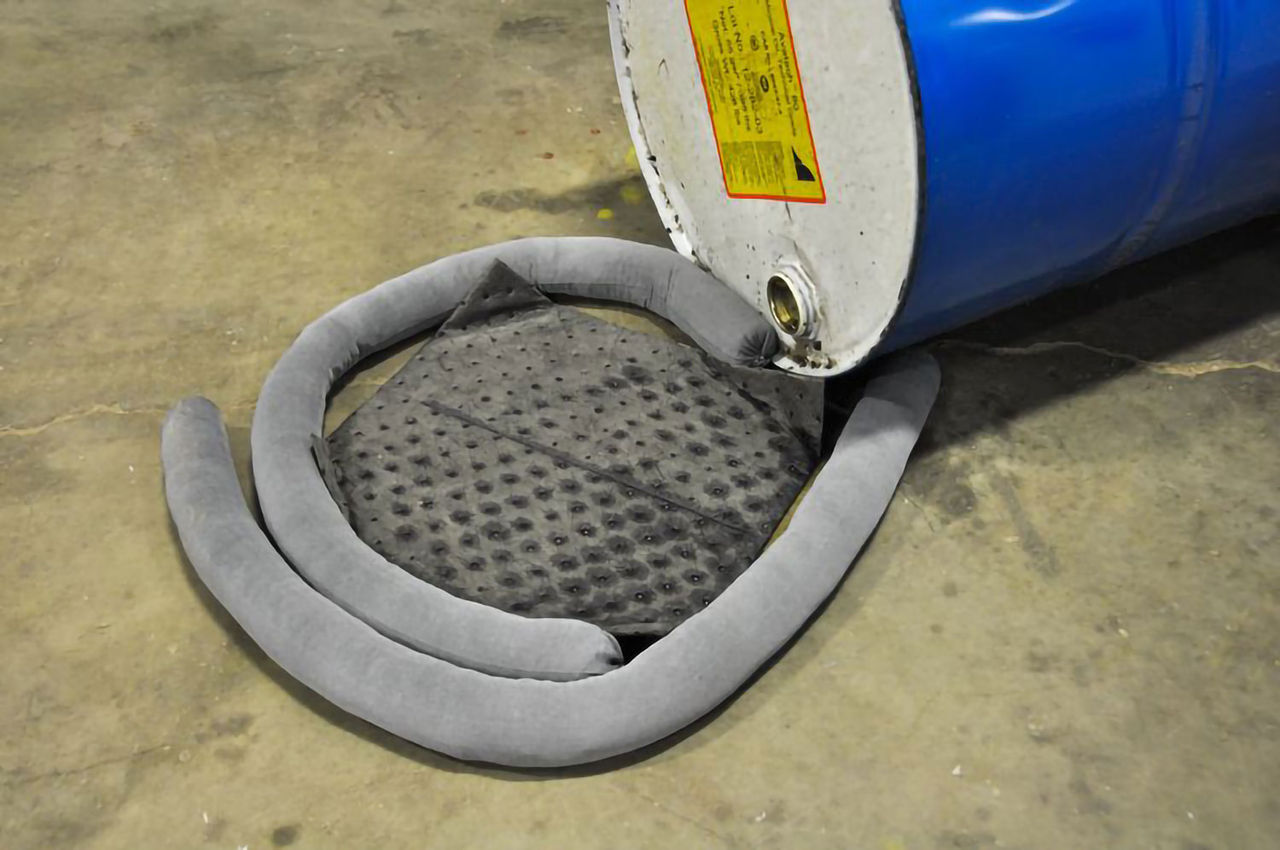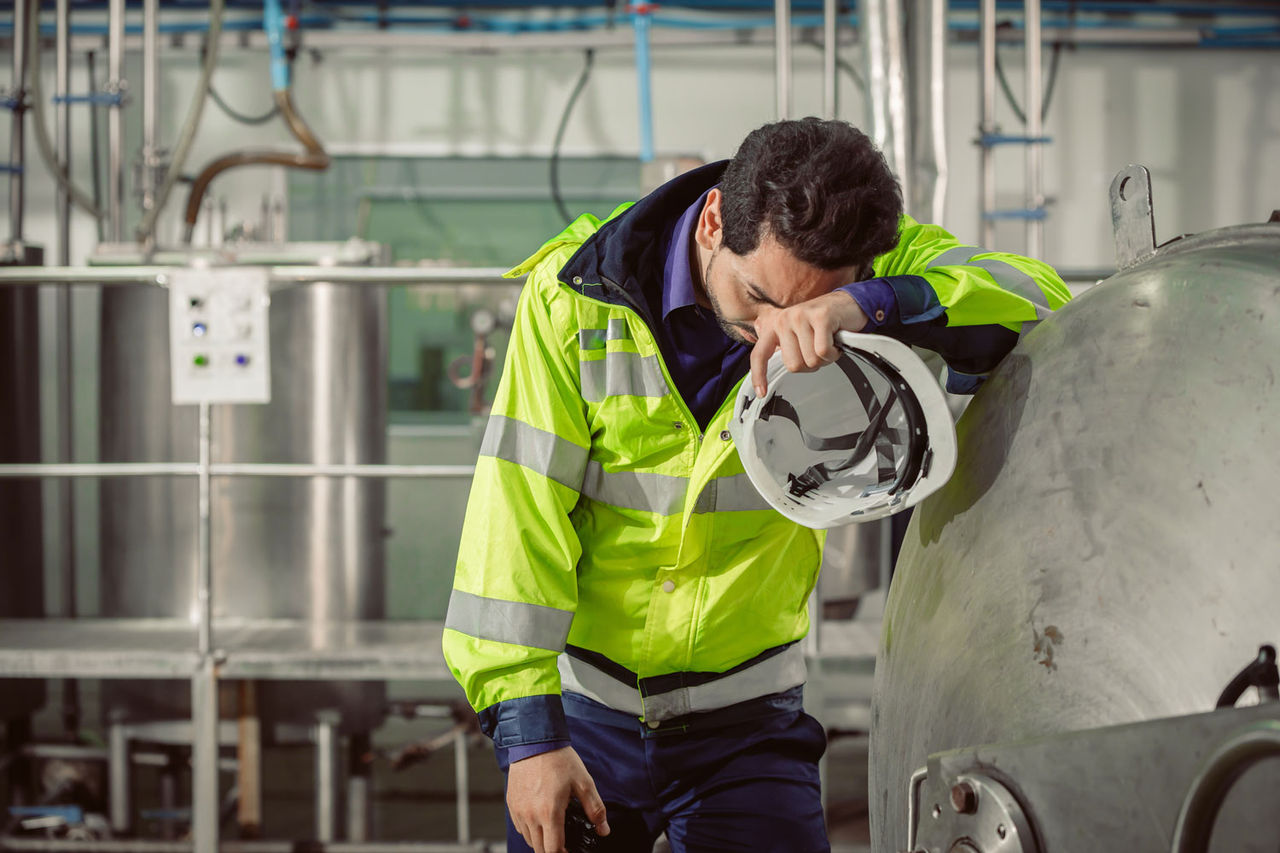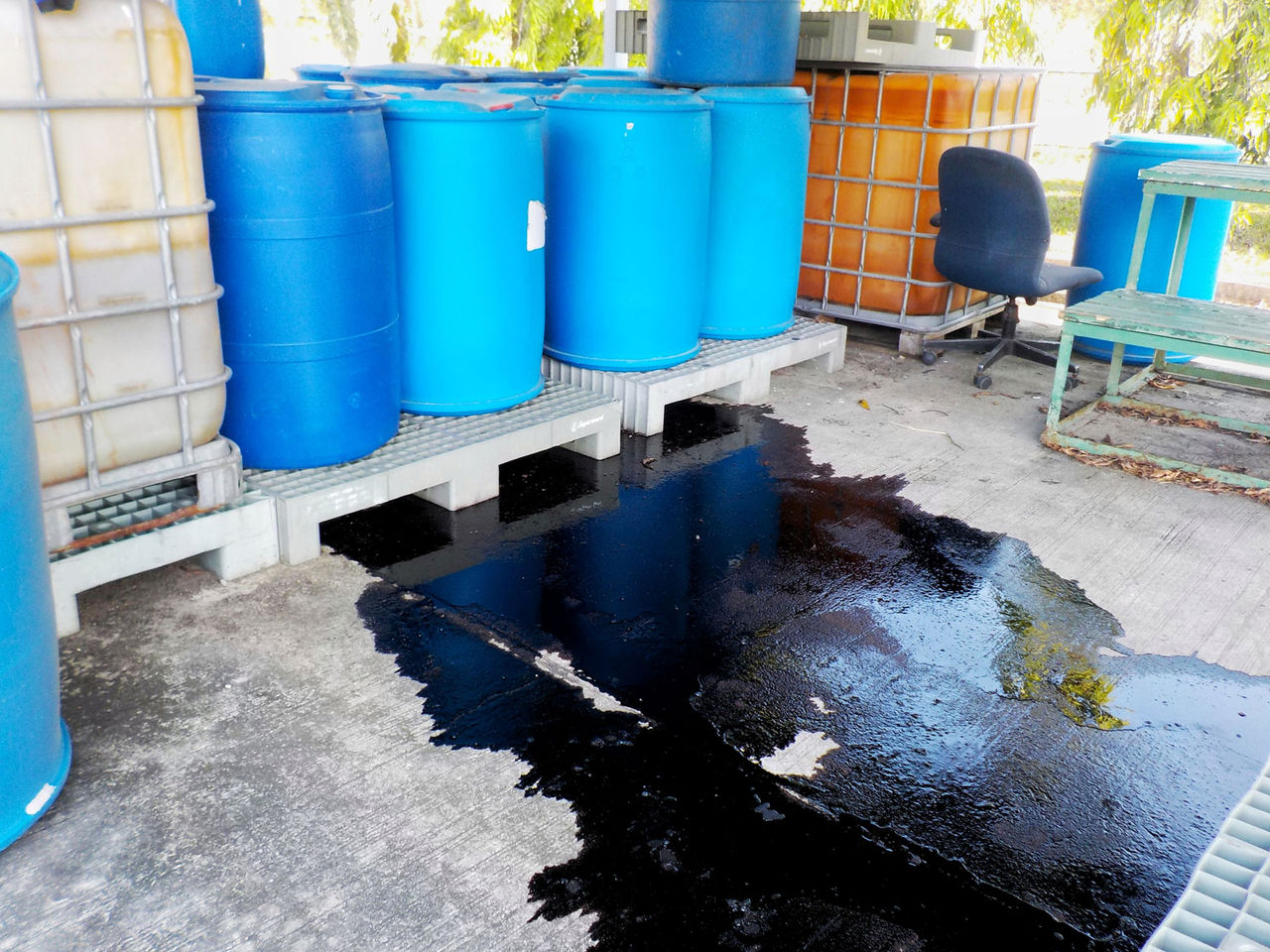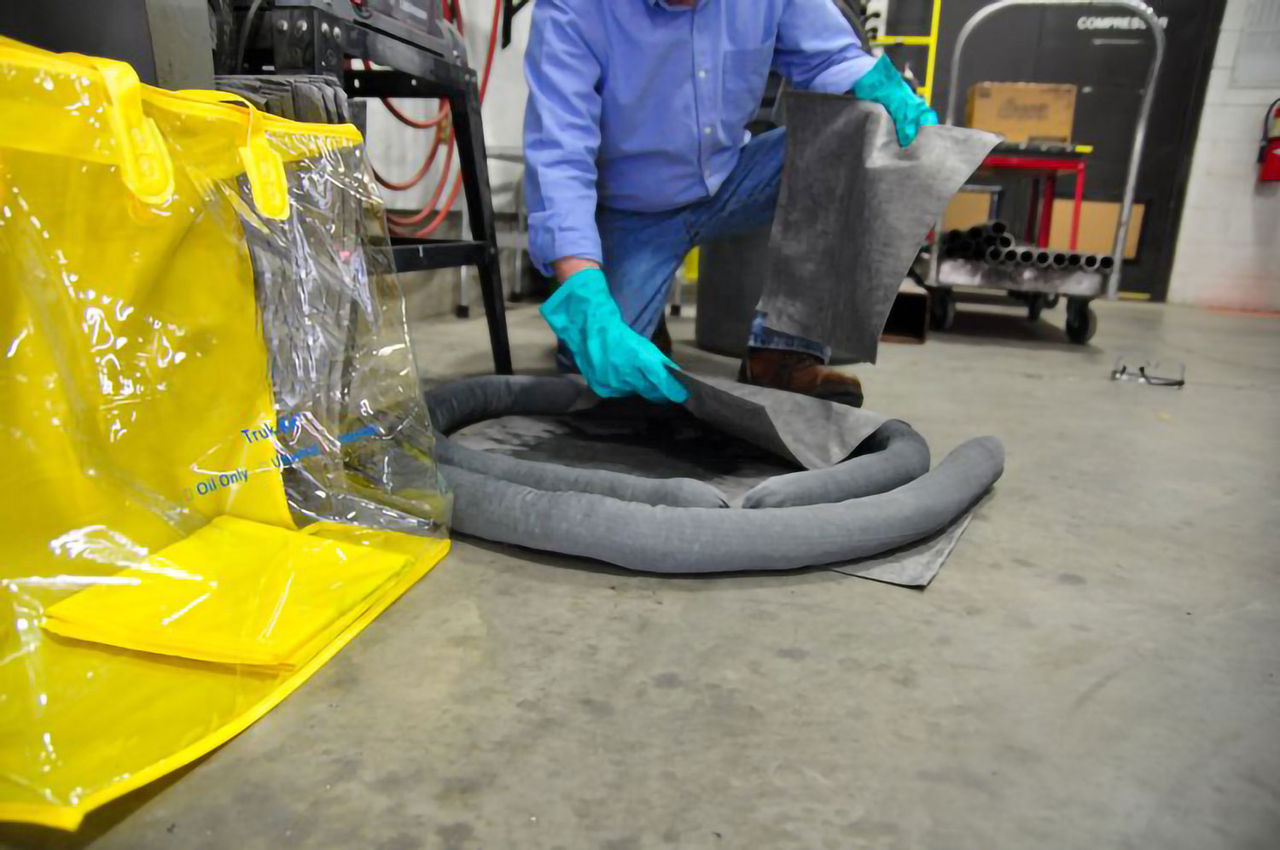In this article
Spills without the thrills
You don’t have to be working with toxic chemicals or hazardous fluids for a spill or leak to be a problem. Even milk is an environmental hazard if it enters a watercourse in large enough volume. And just a small amount of any liquid, spilt on a factory floor, could create a serious slip hazard. So if you want to avoid the unwanted ‘thrills’ of fines for pollution, injured employees, and Health & Safety prosecutions, read on – as an ERIKS spill control expert spills the beans.

If you store or use fluids, a spill is almost inevitable. Most likely, it will be small-scale – when topping-up oil, or from a faulty lubricant seal, for example. If you have a lorry- or car-park on site, the spill could be as simple as oil dripped onto the ground from a leaky engine.
But whatever the liquid, wherever the source, and however small or large the spill, you have legal obligations to manage it, clean it up, and dispose of the resulting waste.
What’s your spill response?
The first response to a small-scale spill is usually ‘**!!@*!’.
A spill from a leaky machine may only constitute a slip hazard. So it could be quicker and less costly to contain and clean up than to fix at source, if that would require production downtime. An easy-access, dedicated spill station, containing absorbents, will make it easier to prevent spillage from spreading, mitigate any slip hazard, and prevent possible pollution, environmental or other damage – not to mention making cleaning-up easier.

At the other end of the scale, a large volume toxic spill has the potential to cause enormous environmental pollution, and result in huge clean-up and rectification costs. In addition to reputational damage and associated loss of business.
To handle this size of spill effectively, you need an emergency spill kit that – like a fire extinguisher – is always ready for action but hopefully rarely used. You also need an effective and practical Spill Response Plan, tailored to suit your likely spill hazards, the environment where they may occur, and their potential scale.
Fail to plan. Plan to fail.

The most common ‘non-specialist’ fluid (i.e. not a process-specific chemical) stored in an industrial setting is likely to be oil. Government guidance sets storage regulations for the liquid [see box-out below] which are designed to prevent oil spills spreading.
One option is to use Spill Pallets from ERIKS.
These not only help prevent pollution from spreading spilt oil, but are a highly sustainable solution themselves, manufactured from 100% recyclable plastic.
However, containment is only one aspect of a Spill Response Plan. A Plan also needs to include a strategy for dealing with spills, and should include a Kit Management Plan for selecting, purchasing and maintaining your spill control equipment.

Granules v Socks
Soaking-up spills the traditional way with sand or clay granules is ineffective, inefficient and – with the contaminated material going to landfill – unsustainable.
Instead, you can equip your Spill Response Kit with sustainable and spill-specific absorbents from ERIKS. Spill pads and rolls, and UK-made socks and pillows made from waste from the trimming pads, can be selected to suit the fluid, the spill environment and the likely spill volume. They can also be incinerated as contaminated waste, rather than going to landfill.
With so many fluids, so many risks and so many options for effective spill response, what you need first of all is expert advice. ERIKS can arrange a site survey to identify and report on your spill risks, propose the most appropriate Spill Response Kit, suggest where it should be positioned, and help you prepare an effective Spill Response Plan.
But don’t put it off until later. The only thing worse than a hazardous spill is a hazardous spill you could have controlled.
Catch it while you can - Guide to UK Government Legislation
Government regulations state that an oil container must have secondary containment to catch any oil that leaks. This can be:
- a drip tray underneath
- an outer case (bund) which holds the container
All fixed tanks must be bunded, and a bund must be capable of holding 110% of the container’s capacity.
For more information on Safety Solutions and to get in touch with one of our ERIKS Specialists, please contact your local ERIKS Service Centre, who will be happy to discuss your options.
#ERIKS #LetsMakeIndustryWorkBetter #Chemical #Oil #SpillResponse

